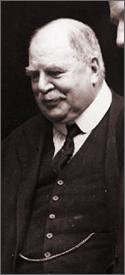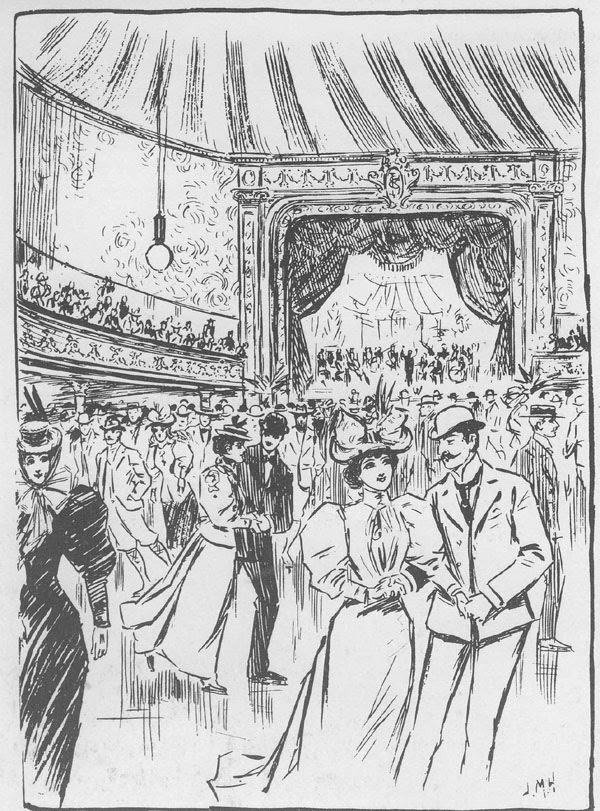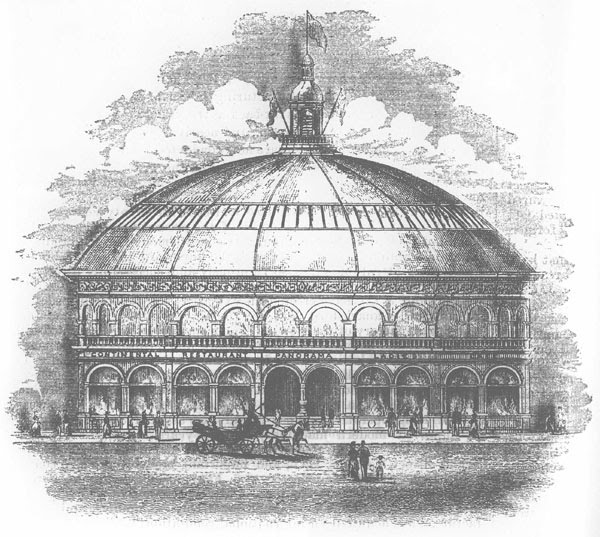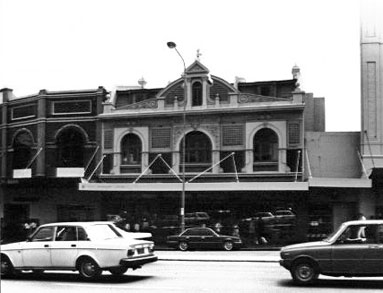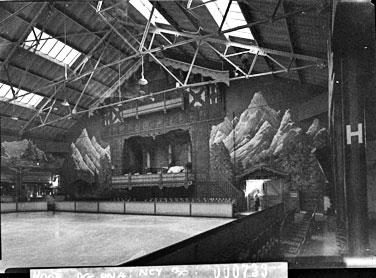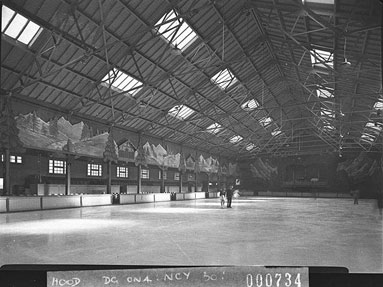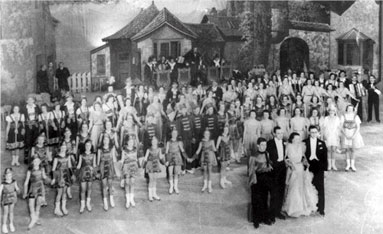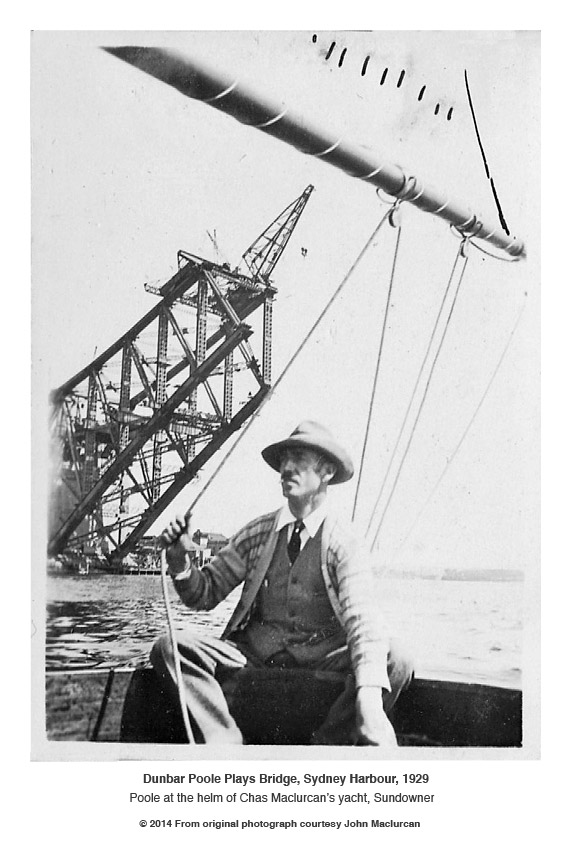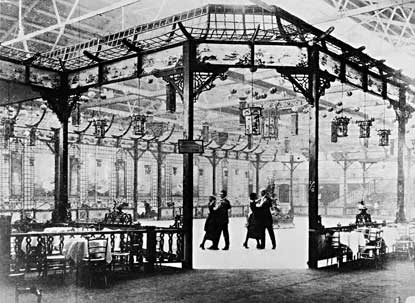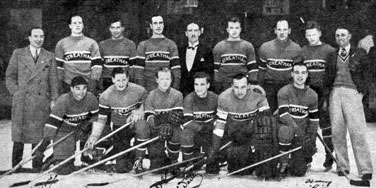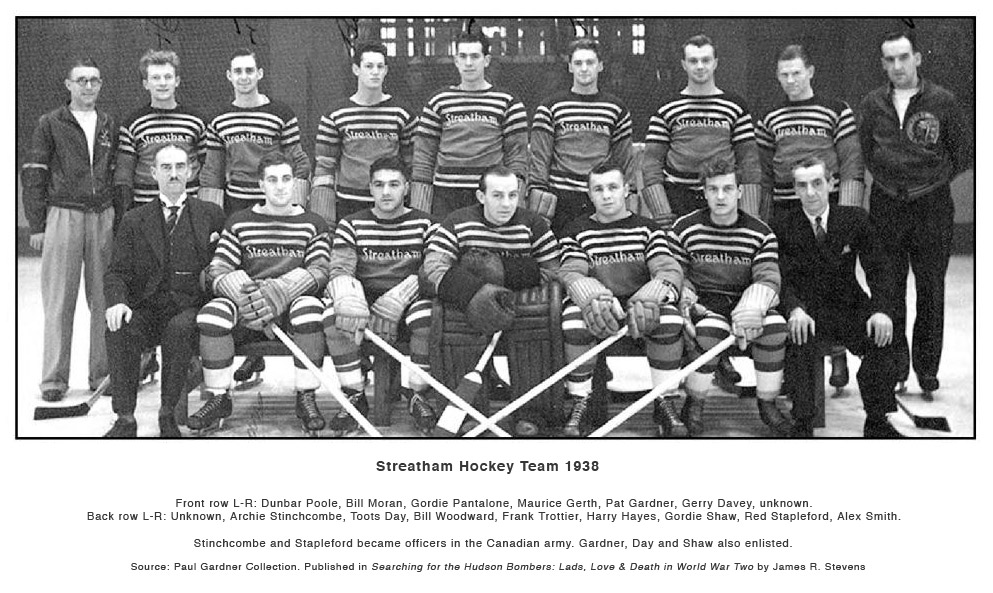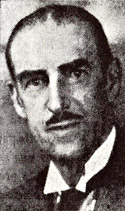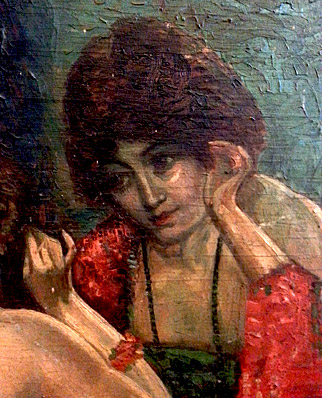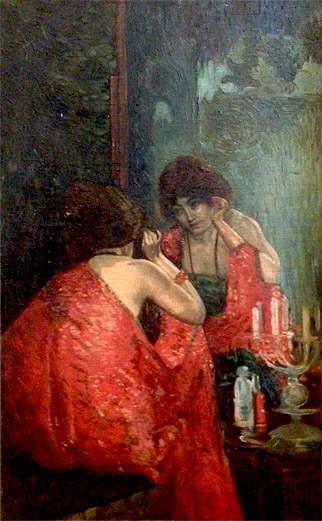Legends
home
You may write me down in history
With your bitter, twisted lies,
You may trod me in the very dirt
But still, like dust, I'll rise.
- Maya Angelou
Dunbar Poole
1877 - 1954
 ORN IN 1877 IN BELFAST, NORTHERN IRELAND, he was the son of James Poole and Elizabeth Simpson who married at Edinburgh in Scotland on February 26th, 1869. In 1899, at the age of 22, Poole sailed in Loch Garry from Glasgow to Melbourne, Australia. [1, 4, 11, 18] His parents followed in February 1901 on SS Oruba. [18] They were both 42 years-old and accompanied by their daughter, Miss B Poole, aged 17. [30, 31] The family lived at 58 Milford Street in St Kilda in Melbourne in 1915. Poole's sister had moved to Sydney in New South Wales by 1921, where she resided at 86 Bayswater Road. Poole learnt ice skating in Britain before he emigrated, and he was no doubt familiar with one or more of five different ball games on ice — most likely bandy — a form of which was played at the Adelaide and Melbourne rinks between 1904 and 1906. Official histories incorrectly place his arrival in Australia as 1903, four years later than his first immigration record. [1] Historically, this has a significant bearing on his British ice experience, particularly given one writer claims Poole also introduced ice hockey to Australia. [1] This is not true. It has also been claimed he was a member of the Adelaide Glaciarium syndicate, but he was not, although he was probably an employee. The joint proprietors of the Ice Palace Skating Company which owned and operated Adelaide Glaciarium were Henry Newman Reid, William Booker and Sir Colin Stewart. [52] Finally, Dunbar Poole has been credited with introducing figure and speed skating to Australia [1] during the Grand Era for Ice Rinks (1890–1920), but even this can well be disputed.
ORN IN 1877 IN BELFAST, NORTHERN IRELAND, he was the son of James Poole and Elizabeth Simpson who married at Edinburgh in Scotland on February 26th, 1869. In 1899, at the age of 22, Poole sailed in Loch Garry from Glasgow to Melbourne, Australia. [1, 4, 11, 18] His parents followed in February 1901 on SS Oruba. [18] They were both 42 years-old and accompanied by their daughter, Miss B Poole, aged 17. [30, 31] The family lived at 58 Milford Street in St Kilda in Melbourne in 1915. Poole's sister had moved to Sydney in New South Wales by 1921, where she resided at 86 Bayswater Road. Poole learnt ice skating in Britain before he emigrated, and he was no doubt familiar with one or more of five different ball games on ice — most likely bandy — a form of which was played at the Adelaide and Melbourne rinks between 1904 and 1906. Official histories incorrectly place his arrival in Australia as 1903, four years later than his first immigration record. [1] Historically, this has a significant bearing on his British ice experience, particularly given one writer claims Poole also introduced ice hockey to Australia. [1] This is not true. It has also been claimed he was a member of the Adelaide Glaciarium syndicate, but he was not, although he was probably an employee. The joint proprietors of the Ice Palace Skating Company which owned and operated Adelaide Glaciarium were Henry Newman Reid, William Booker and Sir Colin Stewart. [52] Finally, Dunbar Poole has been credited with introducing figure and speed skating to Australia [1] during the Grand Era for Ice Rinks (1890–1920), but even this can well be disputed.
The first professional ice skating instruction in Australia was provided by Professor John Charles Gerald Caldwell, a manager and instructor at the Adelaide rink from its opening in September 1904. [50] Caldwell immigrated to Melbourne in 1882 and lived at Langridge Street, Collingwood by 1886-7. [46. 47] The families of Gordon Langridge and Albert Enders also lived at Collingwood during these years. Caldwell had become "the Champion Roller Skater of Australia" by the time the Adelaide ice rink opened. [49] In May 1904, he and "two accomplished lady rinkists" were employed as instructors by the Jubilee Exhibition (Roller) Skating Rink in Adelaide. This rink was managed by another champion roller skater, Frank Beyer, who also managed roller rinks at Richmond and St Kilda in Melbourne (see Robert Jackson). The "lady rinkists" were probably his two daughters, Hilda and Rubina. These two Victorian skaters, Caldwell and Beyer, had trained many of Australia's first ice skaters at the Exhibition Skating Rink in Adelaide, and in numerous Melbourne roller rinks, long before there was even ice:
ICE SKATING RINK. The new Ice Skating Rink at the old Cyclorama was opened for business on Wednesday, a free night on Tuesday having inaugurated the season. There was a good attendance, the house being full in the evening. The floor is not in quite perfect order owing to the difficulty of keeping the expansion within assigned limits, but each day will see improvement. A large number of skaters, many of whom graduated in the Exhibition Rink, occupied the floor, while many others watched proceedings from the comfortable seats provided. The management have spared no expense in the arrangements, and ice skating bids fair to become as popular as roller skating. — Adelaide Advertiser newspaper. [51]
Early in 1905, at the start of the first full season at Adelaide Glaciarium, Caldwell was joined by Professor James Brewer, the "Professional Champion Ice Skater of the World" from Prince's Skating Club at Knightsbridge in London. [44, 45] The rink opened late-1896 aimed at elite British figure skaters but, with ice measuring 210 by 52 feet, Prince's was also host to ice hockey from early 1897. Brewer was highly accomplished in both figures and speed skating (500m in 1 min 2 sec). On his arrival, the Adelaide Advertiser newspaper reported, Professor Brewer, who comes to Australia with excellent credentials ... proved that he is a skater whose equal has never been seen in Australia on an ice rink. [48] He could turn somersaults in the air while skating at full-speed, and he taught ice skating in Switzerland and Britain during the Australian off-seasons. Caldwell and Brewer also captained the first field hockey or roller polo teams to play on ice in Australia, and they professionally trained the first generation of homegrown Australian ice skaters (see Figures), including the young Reids. From the late-1880s, they had been preceded by the American Pacific Coast roller champions, such as A N Ridgely and Robert Aginton (see Robert Jackson).
Poole was present in Adelaide during these first years, but not as a professional skating instructor, nor even as rink manager. He was still present in February 1906 when he was elected to the Council of the South Australian Society of Arts to fill a vacancy caused by the death of artist C H Gooden. [53] However, his name does not appear in an organisational role for ice sports in any of the hundreds of contemporary newspaper references to Adelaide Glaciarium so far reviewed. He probably lived in Scotland as a boy with access to ample natural ice surfaces and skating clubs. The first skating club in the world was formed in Edinburgh in 1642, continuing until 1966, whereas something similar was not established in London until 1830. Many others followed and they were the reason why inventors tried for many years to produce artificial ice surfaces because the influence of the weather meant that whole seasons could go by without a good skatable surface. However, aside from the experimental “Real Ice Skating Palace”, 1896, at Glasgow, which was reportedly just a short-lived novelty, the first skatable Scottish rink did not open until 1907 at Crossmyloof, near Glasgow, courtesy of Scottish Ice Rink Co, long after Poole had emigrated. Any indoor ice experience he had developed, including organised ice hockey, could only have been acquired in England or continental Europe, between the mid-1880s, when he was old enough to learn, and mid-1899, when he had left for Australia. But he was an events manager with limited ice skating proficiency when he arrived in Australia, and it was from there that he developed his figure skating skills.
Historical notes:
The spectacular Exhibition Building on North Terrace was built to accommodate the Adelaide Jubilee Exhibition in celebration of the colony of South Australia's fiftieth birthday in 1887 (see image in Figures). The exhibition ran from June 1887 to June 1888. The grandeur of the building was a symbol of the colony's progress and was in a formal classical style, with an imposing dome. The building had various uses before its demolition in 1962 to make way for the Napier building and adjacent car park and plaza at the University of Adelaide. The sport of competition roller skating, also popular in the 1950s, has experienced yet another resurgence in Australia and is said to be the fastest growing sport in the world. The World Speed Roller Skating Championships were held in Adelaide from 3-6 September 1986. Adelaide hosted Melbourne in the inaugural Skate of Origin, Australia's first interstate all-girl roller derby bout, at Jubilee Pavilion in the Wayville Showground on 24 February 2008. The Adelaide Roller Derby league has a program of events for 2009.
England 1876
The earliest rinks in Britain between 1841–44, used an ice substitute of hog’s lard and a mixture of salts to provide year-round ‘ice’ skating. The craze had run its course by 1844, as rinkers tired of the smelly ‘ice’ in the Glaciarium, as the venue was often called, and it was not until the 1870s that skating caught on again. Although official histories do not always agree, Pearson [15] writes: the first rink opened at Brighton’s Corn Exchange in February 1874, and rinkomania was at its height by Spring 1876, when Brighton had six rinks, and London around fifty. In 1876, twenty-nine rink companies were floated and twenty-one collapsed as the boom deflated. The physical evidence of the mania is sparse, since many rinks were conversions of halls, circuses and other suitable spaces. The British Architect despaired of skating rink design, preferring breweries or factories to the many miserably plain and inartistic rinks thrown together by clumsy hands; it felt that skating rinks would continue to be much like railway stations — mere roofs, more or less elegant in design, for the purpose of protecting rinkers from the rain. [15]
Official historical antecedents of the first Australian Glaciariums were probably four English Glaciariums built between 1876–9 along an axis from London, through Manchester to Southport, north of Liverpool. The world's first mechanically frozen ice rink — London Glaciarium — was opened in Chelsea in 1876 by John Gamgee. It was experimental and only 12m by 7m (40 by 24-ft); of no use for actual skating although it was used privately. However, it did attract attention, and Gamgee opened two further rinks later in the year: at Rusholme in Manchester (really the first skatable artificial rink) and the "Floating Glaciarium" at Charing Cross in London (much longer; 35m by 7.6m). The refrigeration process was expensive, and mists rising from the ice deterred customers, forcing Gamgee to close the Glaciarium by the end of the year. All his rinks had shut by mid-1878, about the time Poole was born.
However, in 1879, sixteen miles from Liverpool, Southport Glaciarium opened using Gamgee's method; a concrete surface, with layers of earth, cow hair and timber planks over which were laid oval copper pipes carrying a solution of glycerine with ether, peroxide of nitrogen and water. The pipes were covered by water and the solution was pumped through, freezing the water into ice. Gamgee had discovered the process while attempting to develop a method to freeze meat for import from Australia and New Zealand, and had patented it in 1870 (see New Wave). The Southport Glaciarium, was 50m by 20m (164 by 64-ft), built and supported mainly by local businessmen. It was billed: 'The Only Real Ice Skating Hall in the World! The Figure Skaters’ Paradise! Open in all Seasons! Spring, Summer, Autumn and Winter! Admission 6d.' Curling Clubs were also common at Southport. It struggled for ten years until it closed at a financial loss in 1889, when Poole was about age twelve. The family of Scotsman George Dunbar Poole [31] lived at Omskirk, only a short distance south-east of Southport during the later years of the Southport Glaciarium. George died there in 1890, the year after it closed. Dunbar Poole may have had relatives seven miles from one of the few, if not 'only', indoor rinks in Great Britain, from sometime after the age of four or five until the age of twelve.
England 1890
Almost immediately, rinks sprang up in other countries, and many more opened in Britain. [6, 7] England became quite active in ice skating during the 1890s as a result. In July 1892, at Scheveningen, Holland, International skaters, including the National Skating Association (NSA) of Great Britain, set up the International Skating Union (ISU) to control speed and figure skating world-wide. In 1896, the Swedish skater, Henning Grenander (1874–1958) demonstrated the International-style at the National Skating Palace in London (pictured right); stirring interest in it. The style is largely attributed to the American Jackson Haynes (1840–1876), regarded as the father of figure skating. In the same year, Prince's Skating Club opened in Knightsbridge (pictured right) and was very popular with London's aristocratic society. It operated on a membership-only basis and was aimed at the elite of British figure skaters who wished to practise on uncrowded ice. In 1898, the ISU allocated the World Championships to London and it was held at the National Skating Palace; again, won by Grenander. The year after, in 1899, the NSA held its first International-style competition at the Hippodrome in Brighton (pictured below left) and Edgar Syers (1863–1946) finished third in the World Championships in Davos. [5]
In Australia, at least, Poole was reputedly 'the most experienced rink manager in Great Britain'. It's only puzzling that he then emigrated to the other side of the world to live in a dry country that did not have a single ice rink. Whatever his achievements, they had been attained by the age of 22, perhaps a working life of eight years, at a time when English rinks were used almost exclusively for ice shows and speed and figure skating. The main British rink during these years was the National Skating Palace (1885-1899), at Hengler's Circus in London. The building is now better known as the London Palladium. Similarly, the Brighton Hippodrome in Middle Street , started life as Brighton Ice-Rink in 1897 and was converted into a circus and renamed the Hippodrome in 1901.
England was purportedly a training hub for many international skaters at the turn of the century, and produced most of the ice shows in Europe at the time. The best skaters in the world were from Russia, Sweden and Canada but they did not have indoor, year-round ice, so London began to attract the world champions such as Ulrich Salchow, Panin and Axel Paulsen. English standards and styles became world standards. By 1900, London had eleven rinks, some really lavish like The Great Hall at The Grosvenor House Hotel in Park Lane, others just big like Hammersmith. However, that was about the same time that Poole had emigrated from Glasgow to Melbourne in 1899, raising doubt that Poole could have accumulated any significant expertise in ice hockey from England or, for that matter, from Scotland.
England 1895
Sons of the British Governor-General of Canada (Lord Stanley of Preston) were all keen exponents of this new sport, and persuaded their father to lend his name to the first ice hockey cup competition — the Stanley Cup. The Stanley family continued to encourage the spread of ice hockey upon their return to Britain from Canada in 1895. During the winter of that year, they played ice hockey on the frozen lakes of Buckingham Palace with the Prince of Wales (1841–1910), aged 55, and his son the Duke of York, aged 20 (Prince George, pictured left). As it happened, two future kings iced for the Palace side against a House of Commons' team led by Francis Bingham Mildmay, MP, (1861–1947) assisted by A J Balfour (1848–1930), earl and a future prime minister of England. [24] One writer says another player, Sir Edward George Villiers Stanley (1865–1948) , the eldest of Lord Stanley's seven sons, captained the House of Commons' team. There were eight players each side. The Prince of Wales acted as 'back' and the Duke of York as 'forward'. This is the first mention of the game being played in Britain, three or four years before Poole emigrated from Glasgow. [22]
Interestingly, the Stanley earls originated in the Lancashire area around Ormskirk where the family of George Dunbar Poole lived, not far from Southport Glaciarium. The Stanleys were one of the great families of England whose main houses were at Knowsley and Lathom in south-west Lancashire, between Liverpool and Ormskirk. On his return from Canada, Lord Stanley soon became mayor of Liverpool, 1895–6, but the Poole family of Ormskirk had probably relocated by then. The Southport rink had closed 6 years earlier and George Dunbar Poole had died in 1890. Dunbar Poole was about age 13, but his exact whereabouts at the time is unknown.
Until recently, the first organised ice hockey game in Britain was generally accepted as having taken place later in the same year as the Buckingham Palace match, between the Universities of Oxford and Cambridge. [22] Tradition places the origin of the Oxford University IHC in 1885, when it supposedly played against Cambridge University IHC at St Moritz, Switzerland. [22] This date is recognised by the Hockey Hall of Fame, and prior to the 1985 Varsity Match 100 years later, the IIHF formally recognised the St Moritz game as the first-ever ice hockey match played in Europe. However, there was never any contemporary evidence that the match took place, and both the 1885 and 1895 games are now identified on Oxford's historic leader board as a bandy matches. [26] University and club histories now say the first official hockey Varsity Match took place in 1900 and continued, sporadically, until the outbreak of war in 1914. [27] In 1900, the Princes rink hosted the first Ice Hockey Varsity Match, although Oxford insisted on playing with bandy sticks and a lacrosse ball. The next year, another Varsity Match was held, this time using a puck and hockey skates. Poole could not have learned ice hockey from Varsity matches in the UK because he had emigrated the year before the first Varsity ice hockey game on record and, in any event, it was not hockey but bandy. The few Varsity matches played prior to then are now officially known to have also been bandy.
Poole apparently counted Prince Edward, the Duke of Windsor , among his friends. [1] Edward was the eldest son of Prince George, one of the players in the first recorded ice hockey game in England, there at the palace, fifteen years before he ascended to the throne. Poole was aged 18 at the time and he could not have been involved with the match through Prince Edward who was only one year old; born the year prior, in 1894. Had Poole been a friend of one of Lord Stanley's sons, or the Duke of York, as different to his son, the Duke of Windsor, he would have had access to knowledge of the first game in Britain, and how to go about it in Australia. Yet, it is unlikely Poole would have left that off the record.
Edward's title was created in the Peerage of the UK in 1937, without precedent and specially for Prince Edward. Edward was heir to the throne and he ascended when his father died in 1936. Only months into his reign, Edward forced a constitutional crisis by proposing marriage to the American divorcée Wallis Simpson. Although legally Edward could have married Mrs Simpson and remained king, his various prime ministers opposed the marriage, arguing that the people would never accept her as queen. The title was created as a political expediency when Edward abdicted and his younger brother took the throne. Poole was 60 years-old by then. After the World War II effort, Edward and Wallis were widely regarded as minor celebrities; a fairly tragic result for a man who was, for a few months at least, King of the United Kingdom and all its realm, including Australia.
Glasgow 1896
William Pollock Wylie, the son of Scottish journalist and Baptist minister William Howie Wylie, is regarded as the founding father of ice hockey in Scotland. He was manager of the commercial department of the Christian Leader newspaper and arranged and participated in "hockey on the ice matches" between Scotland and London Bandy Club. The matches were played using a puck at the circular Real Ice Skating Palace rink on Glasgow's Sauchiehall Street, during the summer of 1896. Wylie was also captain and goaltender of a team representing the "Scottish Ice Hockey Club" in December 1897 at an international ice hockey tournament in Paris. [58]
London 1897
Princes Ice Hockey Club in London was one of the most influential early European ice hockey teams and is now generally considered the first ice hockey club in Britain. The Club was based at Princes Skating Club, which was the club of Australia's first skating professional, Professor James Brewer. Princes replaced a roller skating rink near the famed department store, Harrods, in London's Knightsbridge district. In 1897, Admiral Maxe, founder of the Club gave Major B M ‘Peter’ Patton permission to form an ice hockey team at the rink. Patton was 21 years-old at the time, and he continued to play for 34 years, including captaincy of the British team that won the first-ever European Championship in 1910 at Les Avants, Switzerland. Under Royal and aristocratic patronage, ice hockey and skating began to grow in popularity and new rinks began to appear around London. Initially, Princes played only three other teams founded about the same time: Niagara, Brighton and Royal Engineers. [20] Niagara were the first English Club Champions in 1898, just six months before Poole left Glasgow for Australia. This team played out of the Niagara Hall Ice Rink, situated in York St, Petty France, close to St James Park Station in London. It was small — a diameter of only 34m or about ten percent bigger than the first Australian rink in Adelaide.
It matters little, but despite these first games in late-19th century England, the International Ice Hockey Federation (IIHF) consider the first ice hockey games in Europe were played at the Prince's Skating Club in Knightsbridge, England, in 1902. In 1905, Belgium and France played two international games on March 4th. Three years later, the LIHG (later the IIHF) was founded in Paris, France. The first English ice hockey league was not formed until 1903–4. It started with five teams: Princes, Cambridge University, London Canadians and two teams from the Henglers ice rink (Henglers and Argylls), all located within the confines of London. [14] It lasted only two seasons, but it was the crucial first step for establishing competitive hockey in Britain. [28] However, Poole had long since left Britain and was in Adelaide, planning its first Glaciarium and any association he may have had with Prince's Skating Club or its first opponents was short-lived. Princes opened in 1896; the first ice hockey was played in early 1987; and Poole emigrated in May or June, 1899. His window of opportunity to see the Princes IHC in action was two years at best and he was quite possibly living in Scotland for at least some of that time, preparing to move to Australia. Like the early Varsity games, the rules of these first few games were not well-documented, so they too may have started as bandy. Even so, if Poole did learn ice hockey in Britain, Princes and the London rinks of its time were the only known venues on record except, occasionally, the frozen lake in St James Park. But it also needs to be remembered that the world professional champion skater, James Brewer, saw all the significant early British hockey developments from Princes, his home rink, before he first came to Australia to teach in 1905.
Modern ice hockey was not played in Scotland until much later — about 1908 in Glasgow, Poole's port of departure nine years earlier — on a rink that had a bandstand erected on pillars in the middle of the ice surface, similar to the rink he helped establish in Adelaide four or five years earlier. Poole first revisited the UK late that year, returning to Sydney from Liverpool in 1909. [4, 41] England and Scotland's first-ever National (home International) was not held until 1910, when England defeated Scotland 11–1 at Princes Ice Rink, London. England won the first ever European Championship that same year, marking the official beginning for the UK Hockey Hall of Fame. [7]
Although Poole reportedly learnt hockey in Britain, it is doubtful he could have learnt the modern game anywhere else in the European Federation before he emigrated, with the possible exception of France. In 1892, Paris opened its first ice rink — the Pole Nord, at the Porte de Clichy. A year later, a second rink was opened; the famous Rond Point des Champs Elysees, a circular rink that still exists as an indoor theatre. Though the French had played an organized form of hockey for two years, the modern game was not introduced until 1894, when Canadian George Meagher (1866–1930), arrived with an updated rulebook and detailed coaching instructions. Meagher's efforts led to the formation of the first official club in the capital, Le Hockey Club du Paris, followed a short time later by Le Club de Patineurs de Paris. The first hockey club outside of Paris was not formed until 1904, in Lyon. Hockey historians have never been able to verify the Meagher-Paris story but if it's true, the club Meagher helped form played the first ice hockey in Europe. [28, 29]
Adelaide 1903
About 1903, Poole was employed by the Adelaide syndicate headed by Henry Newman Reid, to open the first Australian ice rink. He is also credited as a key player in the formation of Henry Reid's Melbourne Ice Skating and Refrigeration Co. The opening of the Adelaide rink in 1904 must have been a huge relief for Poole because he had not skated on ice for six years. In 1904 or 1905, a notice appeared at the Adelaide Glaciarium, convening a meeting of skaters interested in the introduction of a game similar to field hockey on ice. [1, 25] Bandy or field hockey rules and equipment were adopted. IHA history says: "three men who more than anybody else deserve the honour of "Founders of Ice Hockey in Australia" were present at that meeting which marked the birth of the sport in this country; they were Mr. H. Newman Reid, himself, and his two sons Andy and Hal. [25] This record establishes Henry Newman Reid and Poole introduced Bandy or field hockey on ice, not ice hockey, although the rules had been published 27 years earlier in 1877. Reid's son Andy was aged 15, Hal was 13 years-old and Leslie was 10 years-old. Poole played a hockey match on ice in July 1905, billed "England vs Australia". [54] This is the earliest known record of his participation in the early field hockey matches at Adelaide Glaciarium. Most official histories record the Adelaide rink closed after just one year of operation, however, it had operated successfully for the best part of three full seasons (see Figures). Reid dissolved his Adelaide partnership and returned home to Melbourne in late-April 1906, just before the opening of Melbourne Glaciarium. Poole was still in Adelaide in February that year.
Melbourne 1906
In 1906, Poole played on the first Melbourne ice hockey team against USS Baltimore, at the age of 29. This 1906 Melbourne game is recognised as the first organised game of ice hockey in Australia. The introduction of ice hockey to Australia cannot be attributed to either Reid or Poole, as a result of the Adelaide games the year prior. They were not played by organised Clubs and it was bandy or field hockey on ice that was played, utilising those rules and equipment. Neither Pool or Reid had knowledge and experience of organised ice hockey from Scotland, or even Great Britain, because the sport had not been established there by the time Pool left and Reid had arrived in 1864 at the age of two. There is no record that either traveled overseas prior to the first officially-recognised Australian game in 1906.
The type of equipment and rules used in the 1906 Melbourne game has not yet been confirmed, but the first Melbourne teams of 1908–9 reportedly used a type of ice hockey stick that rink management, Henry Newman Reid, had imported from Canada. At the same time, the tennis ball (or hockey ball) gave way to soft rubber disc pucks imported along with the sticks. The sticks were the old "Mic Mac" brand, [10] heavy as lead, with a straight faced blade, three-inches wide (images left). With the new sticks and pucks came the new rules and the true start of the modern game in Australia, sometime between 1906–8. The new rules were based on English "bandy" and Canadian ice hockey, taking what Reid and his co-sponsors hoped were the best from each. Seven men made up the team positioned: Forward, Left, Centre, Right, Rover, Defence, Cover Point, Cover and Goal. [1]
Sydney 1907
Poole relocated to Sydney soon after he played in the first official game of ice hockey in Australia. There is no evidence suggesting he was involved with the Sydney rink syndicate, other than he was chosen to manage its Glaciarium [image below]. Sydney Glaciarium became the focus of his interest in Australia from its opening in 1907 until his retirement, returning on and off to Britain, Europe and North America. [1] Melbourne Glaciarium skaters and hockey players visited Sydney for the opening that year, led by James Thonemann. The first or second ice hockey match ever played in Sydney was organised as part of the opening celebrations, and it was advertised as "Hockey on Ice - Black Team versus White Team". The Black Team players were: J Douglas, H J Smith, Fred Reach, H Kelly, G E Boden and the White Team were Dunbar Poole, Oliver [Howard] Watts (bef. 1873–1942), [7] Duggan, C Part, Ramsay Salmon, and B Latimor. The referee was H Grille and the match result was White Team: 3 (D Poole: 2, R Salmon: 1) and Black Team: 2 (H J Smith: 1, G E Boden: 1). "Black versus White" matches continued at regular intervals in Sydney that year, mainly played at 10:15 pm, after the general skating sessions.
This is also the second and last known documentary record that Dunbar Poole played ice hockey in Australia or, for that matter, overseas. He played in no other officially recorded Australian hockey team in either Victoria or New South Wales. He was not in Melbourne in 1908–9 when Canadian ice hockey equipment and rules are known to have first been used. He revisited Britain returning to Sydney in 1909. While the rink was closed in the summer months, Poole usually returned to Europe. He had moved on just before the Canadian game caught up with him, just as he had done when he first left Scotland.
Poole was reportedly a figure skater, professional instructor, speed skater and 'hockey' player. That was not unusual in those days largely because a single skate was used, a figure skate, which did not encourage discrimination between the various ice sports. Skaters tended to do a bit of everything; waltzing, racing competitions, and bandy with a field hockey stick and a square puck trimmed from a hard rubber ball. Bandy skaters wore very little padding although later, in New South Wales at least, prospective players were first required to pass the Bronze Medal figure skating test. The ice racers or speed skaters tended to have a loose relationship in the early years with both ice hockey and figure skating but they did not form their own association until the 1930s. So, two questions remain unanswered: when and from whom did Henry Newman Reid obtain his knowledge and links to the Canadian game?
Reid organised both the rules and equipment and since he didn't use them in the Adelaide game of 1904, he must have gained the knowledge from someone, sometime between the Adelaide game of 1904, and the Melbourne games of 1908. The most likely candidates were Canadian, Herbert Blatchly, the captain of the 1906 Melbourne team; Professor James Brewer from Princes Skating Club in London where Princes Ice Hockey Club had been competing for some years before his departure for Australia in 1905; and/or members of the USS Baltimore team, and/or the Canadian Junior Lacrosse Team that competed in lacrosse, but also ice hockey at Melbourne Glaciarium in 1907. The Toronto Marlboros used MicMac sticks in 1905 in Blatchly's home-town. The one-piece, hand-carved sticks had been had been made by Canada's native Mi'kmaq population for quite some time and shipped across Canada for decades; ever since the 1870s, when Montreal athletes first took up ice hockey. [10]
For the next six years, Poole mostly lived in Britain returning to Australia only for the Winter season at Sydney Glaciarium; four months of each year between May and September. His first known overseas trip after his arrival in Australia in 1899, was at the close of the 1908 season when he departed for London on November 26th, accompanied by Ramsay Salmon. They repeated this annually between 1908 and 1912, traveling as "professional skaters" in 1909 and 1910, then as tourists in 1911 and again in 1912, when Simon Fraser competed in the 1912 Stockholm Olympics and his family skated at Adelboden in Switzerland. [41] The trip in 1910, was a holiday in Switzerland which was noted briefly in the Sydney magazine The Theatre. [39] Both departed from Melbourne where their families lived, but by 1913 they had permanently moved to Sydney. Poole's mother still lived at St Kilda in Melbourne in 1915, but his sister had also moved to Sydney.
Berlin 1911
Dunbar Poole taught Crown Prince Adolf skating and ice hockey, and became a close friend of the Swedish royal family, according to Sidney Tange. [1] As a result, he became a registered member of the Stockholm Figure Skating Club — "Stockholms Allmanna Skridskoklubb" — possibly during one of his numerous European visits from 1908. It was through this club the Swedish government "invited" Poole to represent Sweden at the World Figure Skating Championships in Berlin, Germany, in 1911. Ulrich Salchow, the Swedish National Champion, won the event and another Swede, Richard Johansson, placed fifth. Poole competed for the Swedes again between February 16th to 17th, 1912 in Manchester, England, where Sweden's Harald Rooth placed fourth. Coincidentally, Simon Fraser Jr, represented Australia at the Olympics in Stocholm that year, and the Fraser family also went abroad. In Manchester, three of seven judges were British and Louis Magnus was a judge for France. Magnus was the 1908–11 French national figure skating champion, and the builder and first president of the International Ice Hockey Federation (IIHF). Some Australian writers are quick to announce Poole finished 7th in Berlin and 6th in Manchester, but he finished 6th of six and 7th of seven; last in both events and representing Sweden, not Australia, where it is thought he had lived for twelve years. [3] However, he had spent two-thirds of each year in Europe since 1908, and his travel records show he considered himself English, not Australian. His scores at Manchester improved by six points; about half those of other return competitors, but the difference between the gold medalist was a factor of five.
Bandy had long been the big winter sport in Sweden; the game that Poole was first associated with in Adelaide in 1904. Even in the 1908 games in Melbourne, when Canadian rules in Australia were first recorded, some bandy rules were retained. It was not until 1919 that Canadian ice hockey was mooted in Sweden, when Raoul Le Mat, a US movie director, visited with his friends, Thomas Cahill and Ernest Viberg. They met with Anton Johanson, chairman of the Swedish Football Association and a member of the Swedish Olympic Committee. Viberg, a Swedish-American, explained how he had played ice hockey at Columbia University and how fast the popular sport was spreading through North America. Cahill, an American football chief, suggested Viberg put a team together and introduce ice hockey in Sweden. They attracted several bandy players interested in learning about the new sport. From there, Swedish ice hockey was administered by the Swedish Football Association from 1920 until it was founded in 1922. [14] Poole could have taught Crown Prince Adolf ice hockey sometime after the 1906–8 Melbourne games, when he had learned it himself but, anything prior would probably have been bandy or similar.
Poole returned to Melbourne from a British port in May 1910 and April 1912, the latter just before the summer Olympics in Stockholm opened by Crown Prince Adolf. [18] He returned to Sydney from Liverpool in 1909, 1910 and 1912. [4, 41] The trip in 1910, was a holiday in Switzerland which was noted briefly in the Sydney magazine The Theatre. [39] His first overseas visit was about 10 years after he arrived in Australia, and he had not traveled overseas prior to the 1908 Melbourne games where Canadian rules were first recorded in use. However, Poole was often out of the country thereafter, for personal reasons or holidays or otherwise associated with his figure skating, each year from November 1908 to 1913, the year before war broke and Interstate ice hockey was suspended until 1921 in Australia. He was accompanied on the first five trips by Ramsay Salmon until 1913, when Salmon married. [41] Trips to Britain, Europe and North America still required months of absence and contrary to what some say, Poole was away from Australia for six consecutive years, usually for the eight or nine months between September and May. He was overseas for most of the formative years of ice hockey in Australia. Moreover, the unusual circumstances and the results of his two International competitions suggest his aims were different to most international competitors. He was described as a "top rink manager in Britain" and an "entertainment industry manager" in Australia, never a figure skating competitor, nor even a skating instructor — until after he had represented Sweden in 1911 and 1912. Herbert Blatchly was also in Britain both these years, returning to Melbourne in June and October respectively. [41]
Notes:
[1] ISU figure skating at this time was judged on a 6.0 scale, sometimes called "the old scale", or "old system". Skaters were judged on "technical merit" (in the free skate), "required elements" (in the short program), and "presentation" (in both programs). The marks for each program ran from 0.0 to 6.0 and were used to determine a preference ranking, or "ordinal", separately for each judge; the judges' preferences were then combined to determine placements for each skater in each program. The placements for the two programs were then combined, with the free skate placement weighted more heavily than the short program. The lowest scoring individual (based on the sum of the weighted placements) was declared the winner.
San Francisco 1913
Between 1913 and 1915, Poole lived at 11 Tranmere Street in Drummoyne in the inner west of Sydney, six kilometres from the CBD. [42] Poole's father, James, died at Drummoyne in 1914. [30] This suburb is surrounded on three sides by Sydney Harbour and the Parramatta River and, as such, has some of Sydney's best waterfront views. He did not contest the 1913 Vienna and 1914 Helsinki ISU championships. After his appearances in the 1911 and 1912 Worlds, he turned his attention to North America. It was a New Yorker, Jackson Haines (1840–1875), who had first developed the International Style using his ballet background to create graceful programs to accompanying music. Ironically, it was not well received in America in his time, and he left for Europe in 1864 to display and teach it, settling in Vienna where ice skating on music was developed further and became referred to as the Vienna School. So, when the International Skating Union was formed in 1892, there was naturally debate over the contents of the contest program. The English (NSA) fiercely opposed adoption of artistic elements, and the result was a compromise; a two-part program of "compulsory" figures and "free" figures. The first men's event was held in 1896 at St Petersburg in Russia and gradually, over the next century, compulsory figures were abandoned one after the other. Then in 1907, long after Haines' death, the United States and Canada formed a competing organization to the International Skating Union (ISU); the International Skating Union of America (ISUA). Within the next two years, twelve European nations had joined the ISU, yet the ISUA had no more than its original membership.
European and North American figure skaters rarely competed against each other due to these differences in skating styles. However, in 1914, pioneer figure skater George H Browne organized the first International Figure Skating Championships of America under the sponsorship of the ISUA. They were open to skaters from the United States and Canada, and contested according to the International Style, which Browne had introduced to the United States in the early 1900s. Louis Rubenstein of Montréal, a former sudent of Haines, simultaneosly introduced the style to Canada. Minto Skating Club in Ottawa and the Earl Grey Skating Club of Montréal became founding members of the "Figure Skating Department" of the Amateur Skating Association of Canada, with Rubenstein as its first president. This was the predecessor organization to Skate Canada. It was a landmark year and one of the spinoffs was the first official recognition of world figure skating as a distinctly separate sport to speed skating. Browne chose US National champion, Irving Brokaw, to demonstrate the International Style when he first introduced it to America in 1908, and Brokaw became the first American skater to qualify in the style, as well as an Olympic competitor. Only two other unofficial American championships followed Brokaw's 1906 win; one held in New York in 1907, won by Edward W Bassett; and one in Jersey City, NJ, in 1909, won by Arthur G Williams of Newark, where Doc Murphy was born. These developments were largely the reason why there was such close contact and cooperation between clubs in the US and Canada during this era, until just after World War 1.
The first official "International" American championships were thus held on March 20th, 1914, in New Haven, Connecticutt, two hours by train from New York City. Poole sailed to San Francisco from Sydney in September 1913, arriving on October 9th with four months to spare. This was his first visit to North America on record, and two years later, he departed Sydney late in 1915, again giving San Francisco as his final destination. [41] However, there was a hiatus due to war from 1914 when Poole first visited, until the championships resumed in 1918 at St Nicholas Rink, New York. Poole arrived at San Francisco during the Panama-Pacific International Exposition when the city celebrated its rebirth after the 1906 earthquake. Brokaw had introduced the first ice shows to North America at the New York Hippodrome in 1916 and late that year, the season following Poole's second visit to America, Robert and Louise Jackson left Melbourne for New York. Robert had been offered a position as a professional instructor at the Ice Palace rink in Riverside Drive, Manhattan, and a season at the Hippodrome (see Robert Jackson). It was there in 1917 that the Jacksons first worked with the ice dancers, Charles and Lena Uksila, and they were probably still there for the resumption of the figure skating championships in 1918. Arthur Held, the first professional instructor at Minto Skating Club, had also worked with Lena Uksila in New York in April 1917, and the Uksilas subsequently coached skating and ice hockey in 1920 and 1923 at both Sydney and Melbourne.
Poole had first learnt to skate in the "English style", which was rigid and formal compared to the International Style, and not recognised at all by the International Skating Union (ISU). He had probably attended the third ISU World championships held in London in 1898, when many International skaters had begun to train there, but he left Britain the following year at the age of 22. At that time he was a rink manager and a proficient skater, not at all a world class expert in either the compulsory (British) or free (International) styles. He may have seen the International Style first hand, but he had little opportunity to develop it before he left Britain, and he did not skate again until 1904 when the first rink opened in Australia. The more limited surface area of the new indoor rinks all but forced English-style skaters to adopt the Continental-style methods, which were similar, but less difficult and graceful. Poole skated in Australia for five years; spent the 1909 and 1910 seasons in Europe; then competed in the ISU championships in 1911 and 1912, placing last on each occasion. He visited the United States the next season when the first unified International Figure Skating Championships of America were held which, for the first time, were based on the International Style. A few years earlier in 1911, the New York Times reported, "a noticeable improvement in the styles and performances of the number who have taken up figure skating during the past season". It was a good place to develop artistic figures, but San Francisco was also home to the great uncles of John Goodall; their Pacific Coast Steamship Company; and the North American ice sports network that had evolved from it (see John Goodall).
On his return to Australia, Poole attended at least two end-of-season carnivals at Melbourne Glaciarium. He gave an exhibition of fancy skating with Winifred Williams in 1915; he skated there again in May 1918, described as "an American expert who has been engaged by the management"; and he gave a demonstration of International free skating later that August at the closing carnival, "in which pirouetting on one and both feet was warmly applauded". The Argus newspaper noted the "particularly graceful skating by Messrs Dunbar Poole and Langley" (see Claude Langley), with whom he was usually mentioned when in Melbourne. Langley had learnt from Brewer since 1904, and he also attended the 1911 world championships in Berlin although he did not compete like Poole did for Sweden. Langley will always be remembered as the driving force behind the National Ice Skating Association of Australia established in Melbourne that year, and Poole in Sydney as its opponent for two decades. Poole was in his mid- to late-30s and nearing retirement when he went to America, but it was in the European winters between 1909 and 1912, and the American winters between 1914 and 1916, that he developed the artistic skill of modern figure skating. On his second trip to America he was no longer a "professional skater" or "tourist". He now called himself an "artist". [41]
The ISU had dealt only with amateur competitors and not professionals since 1895, and there is so far no local record identifying Poole as a professional skating instructor in either Melbourne or Sydney during this period. His role in figure skating in New South Wales is detailed further in the biography of Mireylees Reid. The rules of modern ice hockey were first introduced to Australia in Melbourne by 1908 but, otherwise, it was in the United States, sometime after the 1913 season, that he may have had direct contact with modern ice hockey for any reasonable length of time outside Australia. Although he became the second professional instructor at Minto Skating Rink in Ottawa sometime after 1912, there is no evidence to suggest he traveled on to Canada on either of these trips to the United States. He was billed as an "American expert" on his return engagements in Melbourne, not Canadian. Minto's first instructor, Arthur Held, had only just commenced in the 1911 season, and Poole's first confirmed visit to Ottawa was late in 1922 (see Ottawa).
Historical notes:
[1] On Washington's Birthday, 1908 George H Browne had arranged three exhibitions in Cambridge, MA, comparing the old and new styles. For these exhibitions he enlisted the aid of Karl Zenger, German Champion of 1906, and Irving Brokaw, American Champion of 1906, who demonstrated the International Style. Demonstrating the American Style was J Frank Bacon, the American Champion of 1893. The involvement of these prominent skaters went a long way in bringing US converts to the International Style.
[2] A description of the British and Continental styles written in 1911: "In the British style of figure skating, which is not recognized by the International Skating Union, the body is held as nearly as possible upright, the employed leg is kept straight, the unemployed leg carried behind, the arms hang loosely at the sides, and the head is turned in the direction of progress. In the so called Anglo-Swiss style, affected by British skaters trained at Davos and St Moritz, the upright, almost rigid position is insisted on, even the unemployed leg being held straight. Much more latitude is allowed by the Continental school, though no definite rules of form have been laid down. The knee of the employed leg is slightly bent, and the unemployed leg is in constant action, being used to balance the body during the execution of the figures. The Continental is less difficult in execution than the British style, but its movements are less graceful. There are, of course, local modifications, the strictest exponents of the English school being the Davos and St Moritz skaters, while the Continental varies from the complete abandon of the French to the more restrained style of the Germans; Canadians cultivate also grape-vines and other two-footed figures. The essential features are, however, identical. Thus Englishmen consider of secondary importance loops, cross-cuts, continuous and hand-in-hand skating, though such figures are included in the 1st class test of the NSA, and devote themselves mainly to " combined figures." Combined figures have been defined as symmetrical execution of a figure by one or more pairs of skaters." Originally known as the " skating club figures," they have been gradually developed, and in 1899 delegates from the principal clubs established a regular terminology. The ideal number of skaters for a combined figure is four, though sixes and eights are seen, one being chosen " caller" of the movement to be skated. Various sets of " calls, " are arranged at the discretion of different clubs, and consist ordinarily of " turns " and " changes." The NSA offer a challenge shield for an annual competition in combined figure skating. There has, however, been a marked tendency towards unification of style, through Englishmen adopting Continental methods, rendered almost a necessity by the circumscribed area of artificial rinks. In 1901 the Figure Skating Club was established for this purpose, and its members attained such success that an English lady, Mrs Syers, gained the second place in the world's championship competition in 1902, and with her husband won the International Pair Skating in that year, and again in 1904; and in 1906 she won the ladies' amateur championship of the world, established in that year." [Classic Encyclopedia based on Britannica 11th edition published 1911].
Sydney, 1920
By 1920, Poole was patron of the Sydney Glaciarium Ice Hockey Club when Jack Pike was both captain and president. The following year, Poole was replaced by George Sydney Vernon Buzacott (1861 - 1929), a prominent stockbroker and foundation director of Sydney Ice Skating Rink Company Limited, and Poole replaced Jack Pike as president. Charles and Lena Uksila made their first visit to Australia this year, returning to Vancouver in October, a few months after Herbert Blatchly took his family there for the best part of a year.
Ottawa Canada 1922
Poole's International figure skating experience no doubt assisted his appointment as the second figure skating coach at Minto Skating Club (MSC) in Ottawa. Figure skating had grown in popularity in Canada during the decades following George Meagher's win in an open figure skating competition that was claimed as the world championship. In 1903, the Minto prizes were presented by Lord Minto (1845-1914, 4th Earl of Minto), Governor General of Canada from 1898 to 1904, to encourage the development of skilful performance in figures. It was the next year, in 1904, that he and the Countess founded the Minto Skating Club in Ottawa, which still operates today as competitive figure skating club. Lady Minto skated with George Meagher (1866–1930) who was a co-founder of the club. Lord Minto gave permission for the Earl of Minto coronet to be used as part of the Club crest. The family seat is Minto, near Hawick, Roxburghshire, Scotland.
The original Club membership was composed of fifteen men and a few women, mostly members of the Rideau Skating Club which had been organized about 1885. Skating sessions were first held once or twice a week on the outdoor rink at Government House and members were required to pass a skating test. Indoor skating facilities were soon obtained at the Rideau Skating Rink on the corner of Waller and Theodore (now Laurier Avenue), one of the first indoor skating rinks in Canada, which had opened in January 1889. This was the rink used for ice hockey by the Waller Street School where Victorian-born Tommy Dunderdale played in 1904, and probably earlier since he had arrived in Canada in 1894. Canadian figure skating championships were also held there, although the first official Canadian championship took place in 1914 in Montreal. The Minto Skating Club later operated from Dey's Arena (3rd rink, 2nd Arena) also on Theodore Street (Laurier Avenue). From 1884, there were three different Dey's Arenas. Between them, they were home ice to the Ottowa Hockey Club (Ottawa Senators), and they hosted Stanley Cup challenges in 1903 to 1906, 1910, 1911 and the 1920 Stanley Cup Finals.
The Minto Club had engaged its first professional coach from Europe in 1911, identified only as "Mr Held" in Club history. This was almost certainly Arthur Held who opened a school figures performance at St Nicholas Rink in New York in April, 1917, in which Lena Uksila also performed (see Lena Uksila). The Uksilas were contracted to the New York Hippodrome that year as was Robert Jackson who also became an instructor at the Riverside Drive rink (see Robert Jackson). Dunbar Poole was employed as a figure skating coach at Minto Skating Club sometime after Arthur Held. It is said that he alternated between Ottawa during the Canadian winter, and Sydney Glaciarium during the Australian winter. [37]
Herbert Blatchly, captain of the first Australian ice hockey team of 1906 in which Poole played, had also arrived in Canada in 1920, but about six months before Poole. He arrived in Vancouver from July 17th, 1920 with his wife and two daughters, and lived in San Francisco before returning to Sydney via Vancouver in April 1921. [41] A few months later, at a Committee Meeting of Sydney Ice Hockey Club on 11th August, 1921, it was "Proposed by Mr Cohen, seconded by Mr N Josephs, that Mr Pike represent the clubs in conjunction with the Hon. Secretary of the Committee to hold a benefit night for Mr. Dunbar Poole. Proposed Mr Cohen, seconded by Mr Pike, that the constitution as drawn up by the Secretary be adopted and placed before the members at a special general meeting." The benefit was no doubt in aid of Dunbar Poole's departure for the Minto Rink. Poole arrived in San Francisco for the third time on November 22nd, 1921. However, this time his final destination was Ottawa, and his stated occupation was "ice rink manager". Soon after he had left, the Sydney Ice Hockey Club became the New South Wales ice hockey and speed skating association, under the direction of Leslie Reid and Norm Joseph.
This was also the year in which the United States Figure Skating Association (USFSA) was formed to govern the sport and promote its national growth. Until then, its predecessor, the ISU of America, had claimed governance of all sports on ice in North America; figure skating, speed skating and hockey. Over time, it delegated the regulation of figure skating to both of the national governing bodies which were ultimately created for figure skating in the United States and Canada. It then relinquished control of hockey and morphed into the governing body for speed skating in America after 1927. In this way, America ended up with separate governing bodies for figure skating and speed skating. By comparison, the ISU started out in 1892 as the international governing body for both figure skating and speed skating, and it remains that way still today. All of which serves to highlight how remarkable it was that ice hockey and speed skating in Australia were officially combined under a unified national authority in 1923 by Leslie Reid and John Goodall, and remained so until the early-1950s (see Leslie Reid).
It was most likely the Winter of 1921–2 that Poole commenced at Minto Skating Club. He may have met his predecessor, Arthur Held, on one of two visits to America in 1913 and 1915. Held was in New York in April 1917, but Poole had returned to Australia by then. Although they may have met in America, it seems more likely the arrangements were facilitated by Herbert Blatchly, with assistance from Robert Jackson and Jimmy Bendrodt, through a North American network which by then also included the Uksilas, and probably Tommy Dunderdale. As uncharitable as it may seem, Poole's absence on this occasion seems to have facilitated the new organiser's 3-year plan which culminated in federation. After immigrating to Québec in May 1881, Blatchly had moved to Toronto and first played organised hockey in the first leagues around Ottawa. Tommy Dunderdale had lived in Ottawa since 1894, and he first played organized ice hockey there with his Waller Street School team at the Rideau rink, which had been used by the Minto Club for figure skating championships since 1904. In 1905, he moved to Winnipeg, Manitoba and played the 1905–06 season with the amateur Winnipeg Ramblers, returning to Ottawa to play for the Cliffsides club in 1906. He turned professional in Manitoba the next season, played in Québec and Montréal between 1909 and 1911, then clubs in Victoria, BC, and Portland Oregon. In 1922, the season Poole arrived in Ottawa, the Minto Skating Club moved to the new Rideau Rink on Waller Avenue where Dunderdale first played. [39] The Club subsequently took it over, renaming it Minto Rink.
Poole's mother died at Sydney in 1923 [30] and he returned to Australia from England that year and was unanimously re-elected honourary treasurer and secretary of the NSW Ice Hockey Association in May 1923. [59] He left and returned again in 1925. He returned only once in the intervening years, sometime in 1923, the year Australian ice hockey and speed skating were federated, [4, 41] and in 1924 he was presiding for the second time over of the newly formed NSW ice hockey association, [60] and publicly proclaiming he was still also in control of skating. [56] In 1927, at the age of 50, he married Gladys Maria Waugh (née McKessar), aged 38, at Sydney, and they lived at Darlinghurst, Sydney's notorious red light district, immediately east of the CBD and Hyde Park. [43] Gladys was the only daughter of Maria and Alexander McKessar who had 4 children at Peterhead in Scotland before they migrated to Australia. [30] For the next five years, Poole spent more time in Australia than overseas. Maria had previously married John Waugh in South Australia and moved to Western Australia. The children from her first marriage were John McKessar Waugh, born 1912 and died in the 1980s in Snowtown, South Australia; Joan Milne Waugh who married Ian Barrett MacDonald; and Ellen Marjorie Waugh, born in 1914, who became matron of a Perth hospital (now deceased). [30, 38]
Historical notes: [1] From 1914 through 1927 the ISU of America also sanctioned separate Canadian Championships. While technically under the control of the ISU of America, the actual organization of the Canadian Figure Skating Championships in this period was through the Figure Skating Department of the Amateur Skating Association of Canada which was created in 1914. Since the demise of the ISU of America, the Canadian Figure Skating Championships have been sanctioned and organized directly by the Figure Skating Department of the ASA of Canada and its successor (mostly renamed) organizations, the Canadian Figure Skating Association of the ASA of Canada, the Canadian Figure Skating Association, and now Skate Canada. Skate Canada designates the Canadian Championships of 1914 as the first official figure skating championships of Canada, though championships known as the Dominion of Canada Championships were held as early as 1905. Poole's association with Sydney Glaciarium ended in 1931 when he returned to London to briefly manage the Hammersmith Ice Drome. [57] The English ice show promoter Claude Langdon had converted part of the site of the Hammersmith Palais de Danse into an ice rink. It was the base for the original London Lions ice hockey team until 1933 when they moved to Wembley Arena as the Wembley Lions. By the 1932-33 skating season, Poole had become General Manager of Streatham Ice Arena, London, [34] which opened on February 26th, 1931; one of a spate of government-funded rinks in England at the time (see program cover opposite). The building was designed by Robert Cromie, a renowned designer of cinemas in the 1930s. The ice surface was originally 64m by 30m, 4m longer than the current international standard, but it was reduced in 1951 to make way for more seating, taking the total to 1,200. Streatham closed in 2011 after 81 years, England's second oldest second oldest rink after Queens, built the year before in 1930. [32] During his time at Streatham, he was team manager of the Streatham Redskins IHC in 1934–5, when it won the British National League Championship, and again in 1935–6 and 1937–8. [36] He was made a life governor of the Royal Free Hospital in recognition of his charity work at Streatham. [57] Poole and his wife returned to Australia in June 1938 when he was appointed General Manager of Sydney's second rink, the Ice Palais. [55] He had last returned from London to Sydney in 1931 when Streatham opened in England, and he had retired from the Sydney Glaciarium about that time, not 1937 as some have claimed. He had been absent for six years. [55] His place as manager was taken by Reg Leafe (1897–1953). [2, 40] He told the Sydney Morning Herald on his return in 1938 that he had trained the last three World's Champion Professional Skaters. [55] Sydney’s second ice rink opened in 1938 in the Hall of Industries at the Sydney Showgrounds, Moore Park. It was named the Ice Palais and run by its promoter, Canadian-born Jimmy Bendrodt. [17] The Ice Palais had an International standard ice floor of 61m by 30m. [2] Poole had returned at the age of 59 to manage it until it was forced to close in 1941 when the building was requisitioned for the war effort. Some say Poole was manager when the Ice Palais re-opened in 1948 [1] but he was over 70 years-old by then, and McKnight has written that it re-opened with Charlie Fisher as manager. [2] The opening featured Canadian figure-skating and ice-hockey stars, including the Canadian Bears ice hockey team from Kenora, Canada. Bendrodt presented this team as an amateur team, however the NSW Administration thought otherwise, and it was prohibited from playing for a time, until its potential for promoting local hockey was eventually recognised. At the end of the 1938 season, the Canadians finally played a team that was considered the Australian National team at the time. The Victorian representatives were Ellis Kelly, Johnny White, Hugh "Spot" Lloyd and Colin Mitchell. The Bears roster included Russ Carson (goalie), Stewart Fielder, Frank "Pinky" Clifton and Donald Robertson (see Russ Carson). They were all suspended by an irrate Association, however, their suspensions were in weeks not matches, and they expired long before the next winter. A long awaited Bears vs St George clash took place at Jimmy Bendrodt's Ice Palais in Sydney on September 14th, 1938. Poole was the manager of the Ice Palais this year, [1] and after the match he sent a letter to Jim Brown "inferring" Tom Coulter was a "dirty" player, and then formed a breakaway group that posed "the first threat to Australian controlling bodies". The match was refereed by Norm Turner and the Sun newspaper reported it the following day: "For 40 minutes last night's hockey giants flashed and skidded in the fastest and most thrilling game for years. Play was rough but never out of control of referee Norm Turner whose quick decisions and refusal to tolerate infringements kept the players in check. Tom Coulter was penalized five times. 'Spike' Robinson was knocked out three times but recovered to score the winning goal. The aftermath of this game and subsequent press coverage led to a break-away group being formed by the Ice Palais management posing the first threat to Australian controlling bodies. Perhaps the whole episode would have petered out but for a letter sent sent by the Ice Palais management to the captain of St George, Jim Brown. It inferred that Tom Coulter of St. George was a 'dirty' player. Tom Coulter was on a business trip to Australia. His brother Art Coulter played for the Chicago Black Hawks and was considered one of the best defensemen in the NHL. Tom Coulter had also played with the Black Hawks and was also an accredited referee. Today, he would still be considered the best hockey player in Australia." [The Sun, Sydney, 15 Sep 1938] After Streatham, Poole reportedly managed a rink in Ayr Scotland [57]. The Ayr Ice Rink was the first in that city, opening in 1939 after Poole returned to Britain from Sydney. Frank Chase had arranged to coach and manage the Ayr Raiders in the first Scottish Hockey League (1932-1954) at the Ayr rink in August 1947. He went to Australia instead. Poole was thought to be involved in the construction of Edinburgh Eagles Ice Rink, [1] possibly one of several constructed during Scotland's ice hockey boom of the late 1930s following the remarkable gold medal win by the British team at the Winter Olympics in 1936. The first Scottish National League had been founded in 1932 and, in addition to the league competition during the 1930s, there was also a Scottish National League knock-out cup contested for the President's Puck. There is no known record of an ice hockey team named Edinburgh Eagles in the League. Teams during the 30s were Kelvingrove, Bridge of Weir, Glasgow Mohawks, Perth Panthers and Dundee Tigers. Edinburgh Eagles are Edinburgh University's ice hockey team formed in 2001, and who now play in Division I Northern Conference of the British Universities Ice Hockey Association competition. Poole had said he intended to manage the newly-opened Murrayfield Rink in Edinburgh, but war intervened. [57] He had retired to Australia when he attended the re-opening of the Ice Palais at the Sydney Showgrounds on May 8th, 1948. Dunbar Poole died in June 1954, at his home in Merimbula (Eden) in New South Wales, at the age of 78. [1, 30] Eden, at Twofold Bay on the NSW coast, is known as the 'halfway point between Melbourne and Sydney'. Fifteen years later in 1969, Colin Dunbar Poole, born January 1st, 1934, departed Britain under the Assisted Passage Migration Scheme. [33] It is not known whether Dunbar and Gladys had children, but there are no birth or death registrations in New South Wales to parents by those names. Yet, it is at least possible that Colin Dunbar Poole was the British-born son of Dunbar Poole. He was born during the years that Poole and Gladys were living in or nearby Streatham, England. Unfortunately, published extracts from Tange's brief profile of Poole [1] contain no sources and few dates, particularly with regard to his ice hockey experience. They rely mostly on anecdotal information that is very valuable but, at the same time, hard to verify. Compared to the known facts, Tange's account dramatically overstates Poole's role in ice hockey in Australia and also overseas, by roping-in his uncertain connections with British and Swedish Royal families, along with his very odd participation in International figure skating. It implies Poole's skating achievements were world-class when they weren't, then merges that unreal glory with his Australian ice hockey contributions. On the available evidence, Poole was a 'proficient' skater, never a National or International champion; the timing and circumstances of his royal connections remain unknown; and the games Poole introduced to Australia were not, according to the record, modern ice hockey. Poole was based overseas during the formative years of ice hockey in Australia, starting immediately after Canadian rules were first placed on the Australian record by Henry Newman Reid during the 1908 Melbourne games, until during World War 1 when the sport was interrupted for many years. The New South Wales Goodall Cup team of 1911 was Kendall's first appearance, but it was also Poole's debut, the only record he ever played official ice hockey in Australia, unless the 1906 Melbourne game turns out to have been Canadian rules (a Canadian captained the team). He was well into his thirties, and willing and able to represent another country in international figure skating championships that same year. [3, 4] Had Poole lived mainly in Scotland, his chances of learning Canadian ice hockey were remote. He could only have come across the modern game in London in the late 1890s, when Lord Stanley's sons promoted the sport there and the first clubs were formed two years before Poole emigrated from Glasgow. That is the only possibility worthy of further investigation, because it was in England that Poole reportedly obtained most of his ice experience and where he reputedly held Royal associations. However, it is very doubtful. There are no known links between the Royal family and Poole during those few years when he was about 19 years-old and when he emigrated at the age of 22. Moreover, it is likely that he resided in Scotland, his point of departure, for at least some of that time. His first exposure to Canadian ice hockey was when it was introduced to Australia by others. Dunbar Poole was made a Life Member of the New South Wales Ice Hockey Association in 1933. When Jim Barnett, the former State and Glebe goalkeeper, was elected a life member in 1937 there were a total of four other life members, in this order: E. J. Kendall, D. Poole, N. P. Joseph and C. V. Kerr. [61] Yet, Jim Kendall and Jim Barnett are no longer listed by the New South Wales association. The association maintains Poole took an active role as a player, administrator and selector during his years as manager of the Sydney Glaciarium in ice hockey, figure skating and speed skating. But this was not so from 1920 when ice hockey resumed there after the war (see Leslie Reid). The NSW Association also acknowledge the part Poole played in forming the NSW Soccer Association (now Football NSW). However, the first association was founded in New South Wales by John Walter Fletcher (1847 – 1918) in 1882, when Poole was aged six. It was known as the South British Football Association, although some sources refer to it as the New South Wales English Football Association. In 1898, the year before Poole arrived in Australia, it became the NSW British Football Association. Poole was one of twenty-two inaugural inductees to Ice Skating Australia's Hall of Fame in August 2004. It is very doubtful he introduced figure and speed skating to Australia. That honour more rightly belongs to John Caldwell and the Englishman from Prince's Skating Rink, Professor Brewer. Poole helped to establish the rink in Sydney and he had probably helped to train entry-level skaters in Adelaide, Melbourne and Sydney, but not as a professional skating instructor. He played on the first Australian ice hockey team, then made a significant contribution to ice hockey and rink management in New South Wales. That might change with new information but, as far as is known, those are the achievements for which he should be given most credit and remembered. REGINALD HERBERT LEAFE (1897 – 1953) Born in 1897 at St Leonards in Sydney, New South Wales, the son of Ernest and Janet B Leafe. Successor to Dunbar Poole as manager of Sydney Glaciarium in 1937, when he was 41 years-old. Leafe married Jessie F Evennett (1902– ) in 1923 at Chatswood, New South Wales. Jessie was born in 1902 at Burwood in New South Wales, daughter of Percival J Evennett and Janet L Fraser who had married at Paddington, NSW in 1900. After ten years as manager of Sydney Glaciarium, Leafe retired in 1948 when he was 51 years-old. He was succeeded by John Caruana, the former general manager of Sports Stadium Brighton, England, and husband of Rona Thaell. Reginald died at Chatswood in 1953, two years before Sydney Glaciarium closed for the last time. [40, 42] © 2007 - 2013 Ross Carpenter B Arch (RMIT) M Des (Urban Design) ARAIA. Reproduction prohibited without prior written permission of the author except for the inclusion of brief quotations in a review.
Hammersmith and Streatham, London, 1932
Sydney, 1938
Ayr Scotland 1939
Merimbula 1954
All Rights Reserved. Original Research Nov 2007.
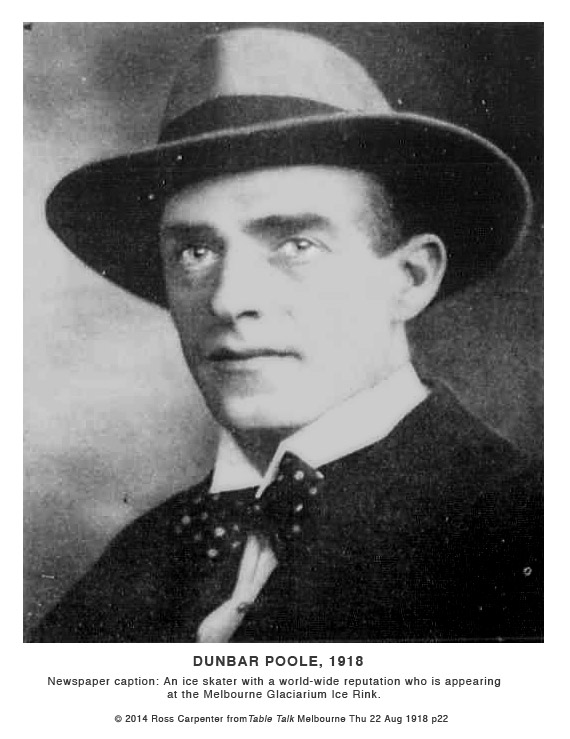
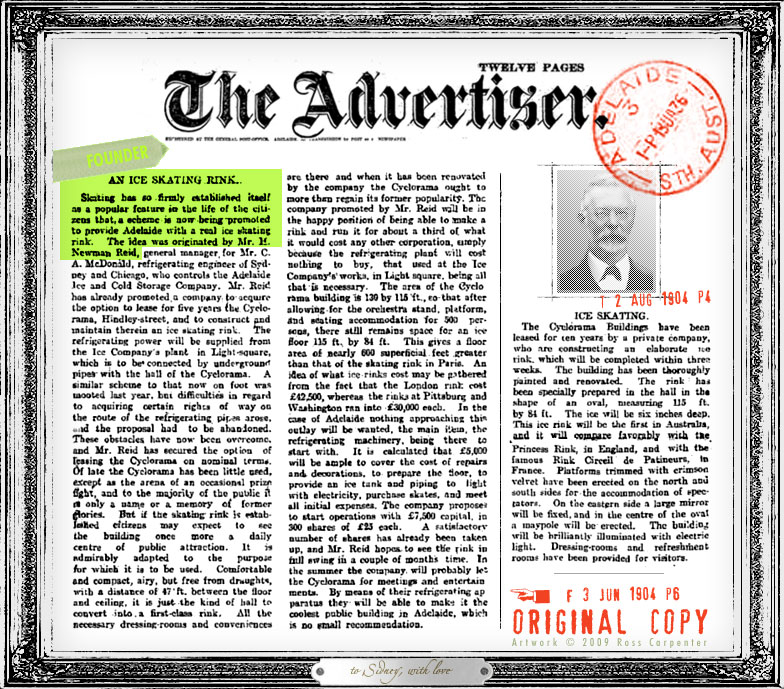
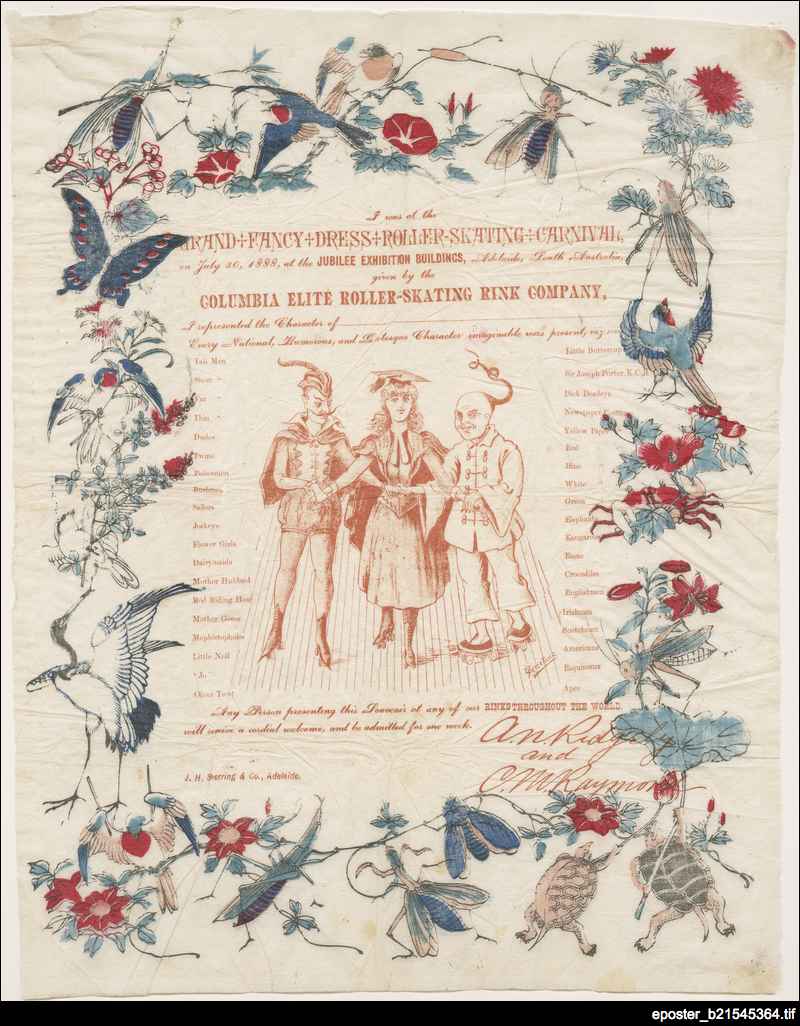
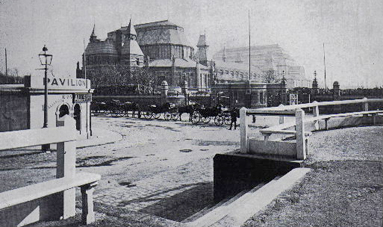 ∆ Southport Winter Gardens, 1880, including the Southport Glaciarium. The entire complex occupied around nine acres including gardens, with a 370 yard sea frontage. The staircase at the main entrance was 15-ft wide and led to the enclosed promenade which was 170-ft long and 44-ft wide, huge tanks housed all kinds of aquatic animals in an aquarium along the promenade. There was a band pavillion which seated 2,000 and held concerts on a daily basis. Chess rooms and a reading room were available. A lofty conservatory housed tropical flowers.
∆ Southport Winter Gardens, 1880, including the Southport Glaciarium. The entire complex occupied around nine acres including gardens, with a 370 yard sea frontage. The staircase at the main entrance was 15-ft wide and led to the enclosed promenade which was 170-ft long and 44-ft wide, huge tanks housed all kinds of aquatic animals in an aquarium along the promenade. There was a band pavillion which seated 2,000 and held concerts on a daily basis. Chess rooms and a reading room were available. A lofty conservatory housed tropical flowers.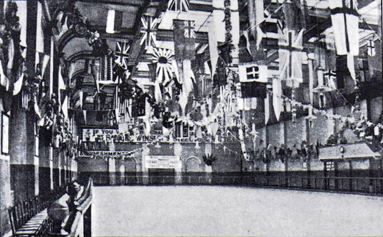

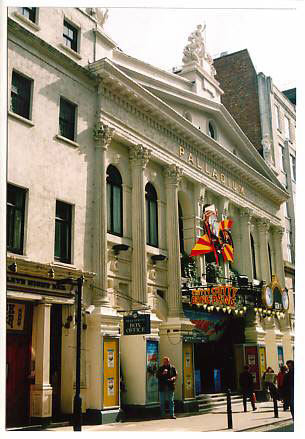

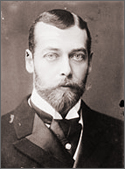
sep.jpg)
